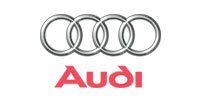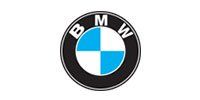,
This is a placeholder for the Yext Knolwedge Tags. This message will not appear on the live site, but only within the editor. The Yext Knowledge Tags are successfully installed and will be added to the website.
OBD II Info
Important Information About OBD II
Dealer Level Services at Reduced Costs | In Business Since 1975 | Experienced Technicians
Dealer Level Services at Reduced Costs
In Business Since 1975
Experienced Technicians
This is a placeholder for the Yext Knolwedge Tags. This message will not appear on the live site, but only within the editor. The Yext Knowledge Tags are successfully installed and will be added to the website.
Hours:
This is a placeholder for the Yext Knolwedge Tags. This message will not appear on the live site, but only within the editor. The Yext Knowledge Tags are successfully installed and will be added to the website.
What Does Your Check Engine Light Mean?
All cars and light trucks sold in the United States and Canada from 1996 onward have a common diagnostic system called On Board Diagnostic II, which is referred to as OBD II. This diagnostic system monitors basic functions of the fuel injection system, ignition system, and emission control system.
When this system detects a fault in one of the components of these systems, or just simply detects the vehicle is not running efficiently, it does three things:
- The OBD II system records a diagnostic trouble code in its memory, so the repair technician can access these codes to facilitate a repair.
- The system turns on the Check Engine Light, which is the same as the Service Engine Soon Light on some vehicles. The light will stay on until the technician turns off the light when he or she repairs the problem, or the system may turn off the light when no faults are detected for several runs.
- If the fault, is serious enough, the OBD II system will put the affected system into default mode to try to minimize any potential damage, and keep the vehicle running long enough to get you off of the road. The vehicle may run with reduced power. The check engine light may start flashing to note that damage is possible.
If the check engine light comes on, an assessment must be made to determine if you can still drive the vehicle, or if it needs to be towed to the repair facility. If the light is not flashing, and the vehicle is running well, it is likely that the vehicle can be driven.
However you should NEVER drive a vehicle with a temperature gauge reading hot, or with any indication of oil problems. You also should NOT drive if the engine is jerking or vibrating noticeably.
If the problem is serious enough, unburned fuel may go into the exhaust system, and when this fuel is burned, it will ruin the catalytic converter and may cause a fire under the car.
Audi, BMW, Mercedes In-Shop Diagnostic Work
There is an equipment and diagnostic fee for the technician to read and analyze the check engine light in the OBD II system. Any actual repair is a separate charge.
If the technician reads the codes, and in their judgment the trouble codes indicate a singular event such as a load of bad fuel or the gas cap was left off, the technician may simply choose to reset the light.
It would be inappropriate to perform repairs that may not be needed. However, if the codes are suggestive of a specific problem, the technician will suggest a repair or further diagnostic work.
On occasion, there may be so many codes in the system from past occurrences or some unusual event that the codes may not make any sense.
In this case, the technician will suggest resetting the light and erasing the codes to see if any of them repeat after driving for a couple of days. In such a case, any charges to the vehicle owner are for diagnostic work and not for any repair work.
If you have any questions about your OBD II system, feel free to call
Steve's Import Auto Repair Inc.
Learn More About Your On Board Diagnostic II System
Call us today for more details
Our skilled technicians figure out problems in import cars.
(409) 886-5162
(409) 886-5162
VISIT US
,
This is a placeholder for the Yext Knolwedge Tags. This message will not appear on the live site, but only within the editor. The Yext Knowledge Tags are successfully installed and will be added to the website.
This is a placeholder for the Yext Knolwedge Tags. This message will not appear on the live site, but only within the editor. The Yext Knowledge Tags are successfully installed and will be added to the website.
HOURS
This is a placeholder for the Yext Knolwedge Tags. This message will not appear on the live site, but only within the editor. The Yext Knowledge Tags are successfully installed and will be added to the website.
HOURS
This is a placeholder for the Yext Knolwedge Tags. This message will not appear on the live site, but only within the editor. The Yext Knowledge Tags are successfully installed and will be added to the website.
Monday
Tuesday
Wednesday
Thursday
Friday
Saturday
Sunday
This is a placeholder for the Yext Knolwedge Tags. This message will not appear on the live site, but only within the editor. The Yext Knowledge Tags are successfully installed and will be added to the website.
Monday
Tuesday
Wednesday
Thursday
Friday
Saturday
Sunday
This is a placeholder for the Yext Knolwedge Tags. This message will not appear on the live site, but only within the editor. The Yext Knowledge Tags are successfully installed and will be added to the website.
CONTACT US
This is a placeholder for the Yext Knolwedge Tags. This message will not appear on the live site, but only within the editor. The Yext Knowledge Tags are successfully installed and will be added to the website.
Hi. Do you need any help?
Privacy Policy
| Do Not Share My Information
| Conditions of Use
| Notice and Take Down Policy
| Website Accessibility Policy
© 2025
The content on this website is owned by us and our licensors. Do not copy any content (including images) without our consent.




Share On: